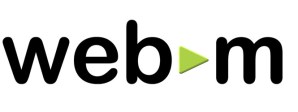
Google launched its WebM digital video format project almost a year ago with the goal of delivering a high-performance online video format that wasn’t burdened by patent claims from a laundry list of technology companies. However, while WebM is now supported in many HTML5-capable browsers—including of course Google Chrome, but also IE (via a WebM plug-in from Google), Firefox, and Opera—adoption of WebM has been somewhat stymied by the specter of possible patent claims against the technology. So far, Google has not been willing to back up its claims that WebM is unencumbered by patent claims by offering to shield implementers from any legal action caused by adopting WebM, and the MPEG Licensing Authority has issued an open call for patents related to the WebM/VP8 patent.
So today, Google moved to encourage adoption of WebM by announcing the WebM Community Cross-License initiative (CCL). Starting out with 17 members, the coalition members have all agreed to license any patents they might hold that are essential to WebM to other members of the CCL. Several big names are part of the coalition, including AMD, Cisco, LG Electronics, Mozilla, Samsung, and Texas Instruments. Missing players include the likes of Intel, Apple, Sony, Philips, and Microsoft.
The WebM format was developed as a high-quality alternative to H.264 video, which Google has repeatedly characterized as “patent encumbered,” although the terms of licensing H.264 technology are well-defined. Google obviously has enough confidence in its claims that WebM is not subject to third party patents to use the technology in its own products, and hopes the CCL will encourage more developers to adopt the technology.
In the meantime, MPEG LA—the same organization that licenses H.264 technology—continues to looking into creating a patent pool surrounding WebM and VP8, the core technology underneath WebM. If MPEG LA were to create a patent pool for VP8 it would undoubtedly allay fears of companies wary of adopting WebM for fear of being sued for infringement and, potentially, increase adoption of the technology. However, it would also undermine Google’s goal to create a high-quality royalty-free digital video format. And Google believes a royalty-free format is critical to driving the growth and ubiquity of online video.

